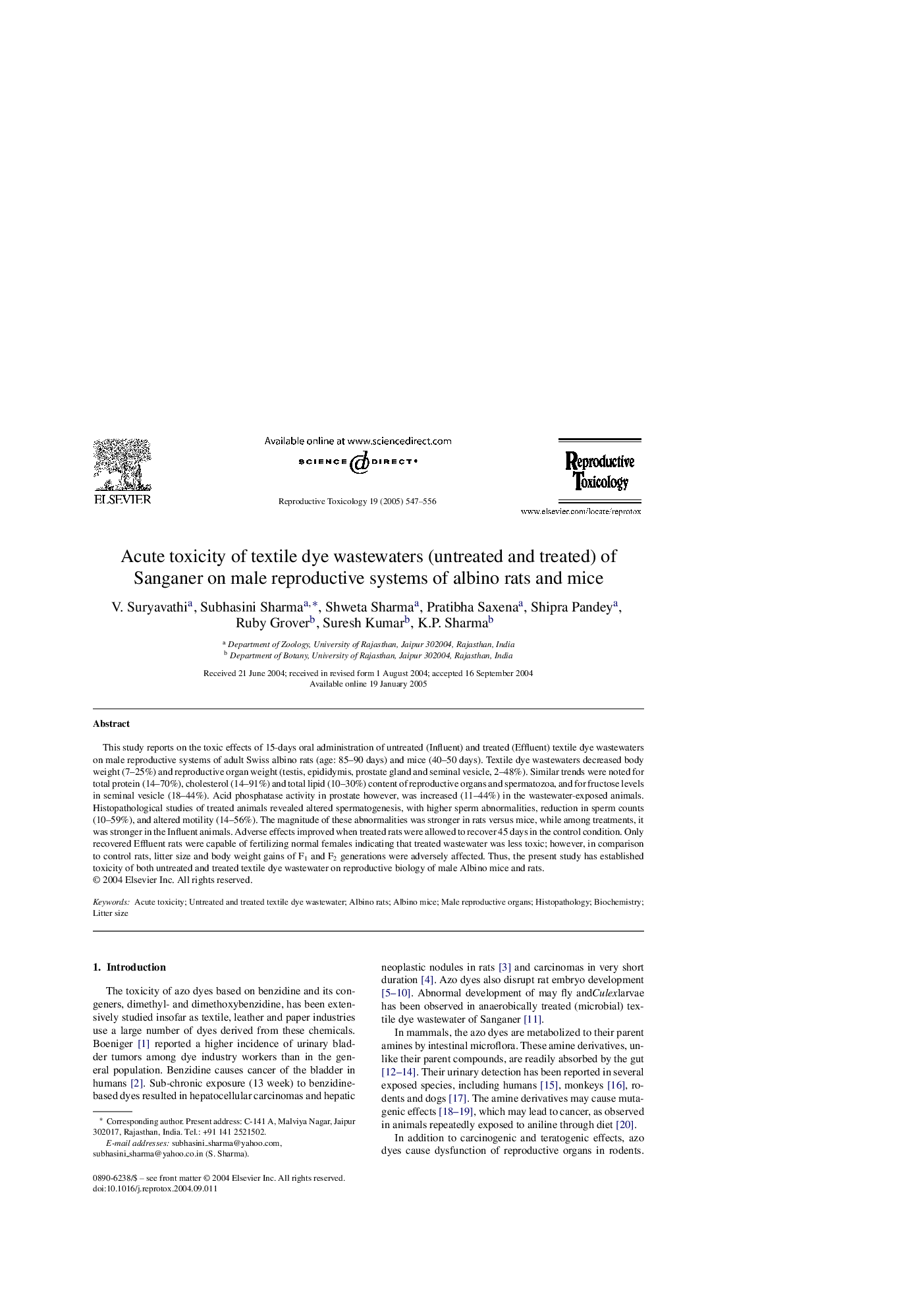| Article ID | Journal | Published Year | Pages | File Type |
|---|---|---|---|---|
| 9034007 | Reproductive Toxicology | 2005 | 10 Pages |
Abstract
This study reports on the toxic effects of 15-days oral administration of untreated (Influent) and treated (Effluent) textile dye wastewaters on male reproductive systems of adult Swiss albino rats (age: 85-90 days) and mice (40-50 days). Textile dye wastewaters decreased body weight (7-25%) and reproductive organ weight (testis, epididymis, prostate gland and seminal vesicle, 2-48%). Similar trends were noted for total protein (14-70%), cholesterol (14-91%) and total lipid (10-30%) content of reproductive organs and spermatozoa, and for fructose levels in seminal vesicle (18-44%). Acid phosphatase activity in prostate however, was increased (11-44%) in the wastewater-exposed animals. Histopathological studies of treated animals revealed altered spermatogenesis, with higher sperm abnormalities, reduction in sperm counts (10-59%), and altered motility (14-56%). The magnitude of these abnormalities was stronger in rats versus mice, while among treatments, it was stronger in the Influent animals. Adverse effects improved when treated rats were allowed to recover 45 days in the control condition. Only recovered Effluent rats were capable of fertilizing normal females indicating that treated wastewater was less toxic; however, in comparison to control rats, litter size and body weight gains of F1 and F2 generations were adversely affected. Thus, the present study has established toxicity of both untreated and treated textile dye wastewater on reproductive biology of male Albino mice and rats.
Keywords
Related Topics
Life Sciences
Environmental Science
Health, Toxicology and Mutagenesis
Authors
V. Suryavathi, Subhasini Sharma, Shweta Sharma, Pratibha Saxena, Shipra Pandey, Ruby Grover, Suresh Kumar, K.P. Sharma,
